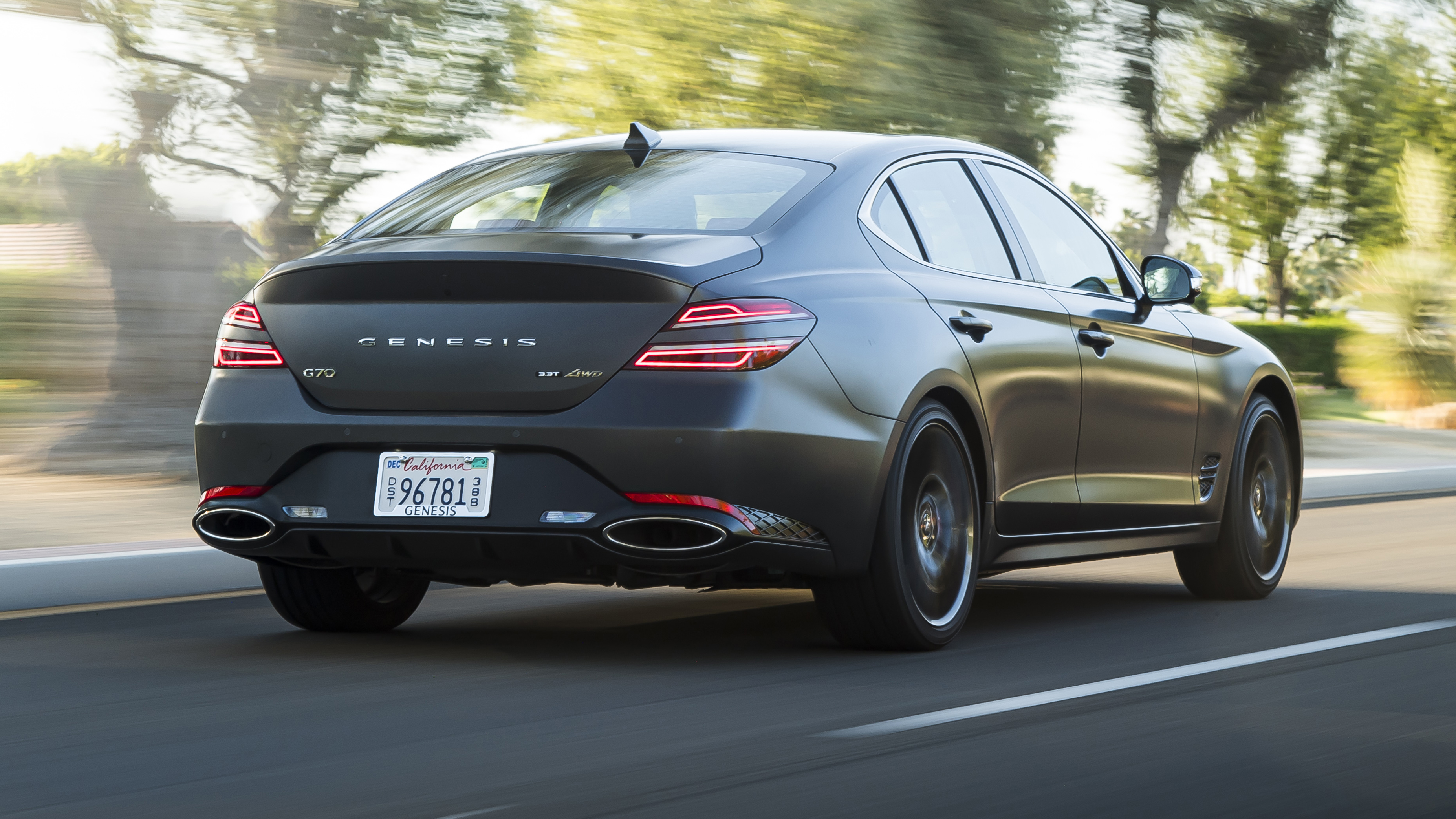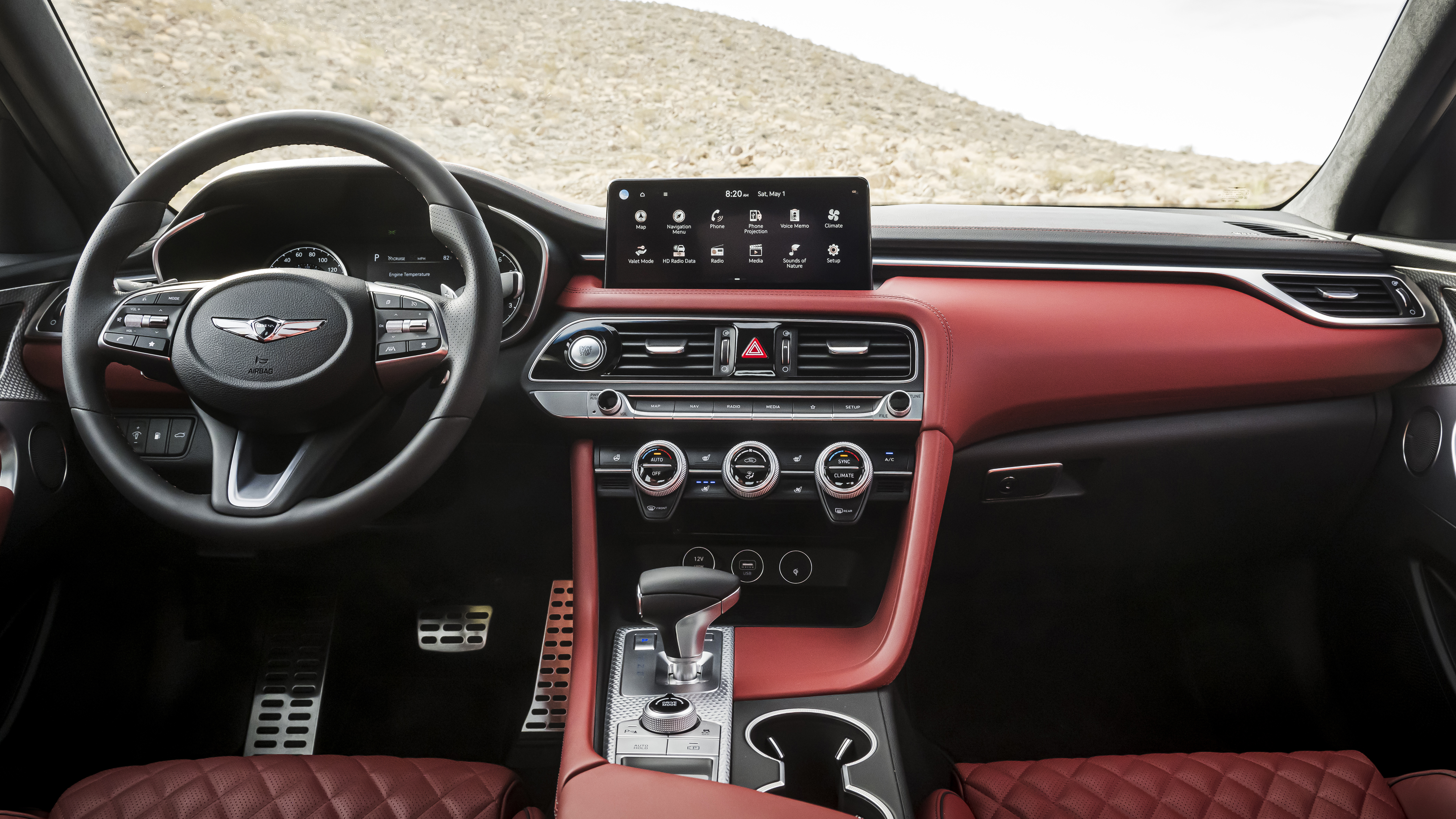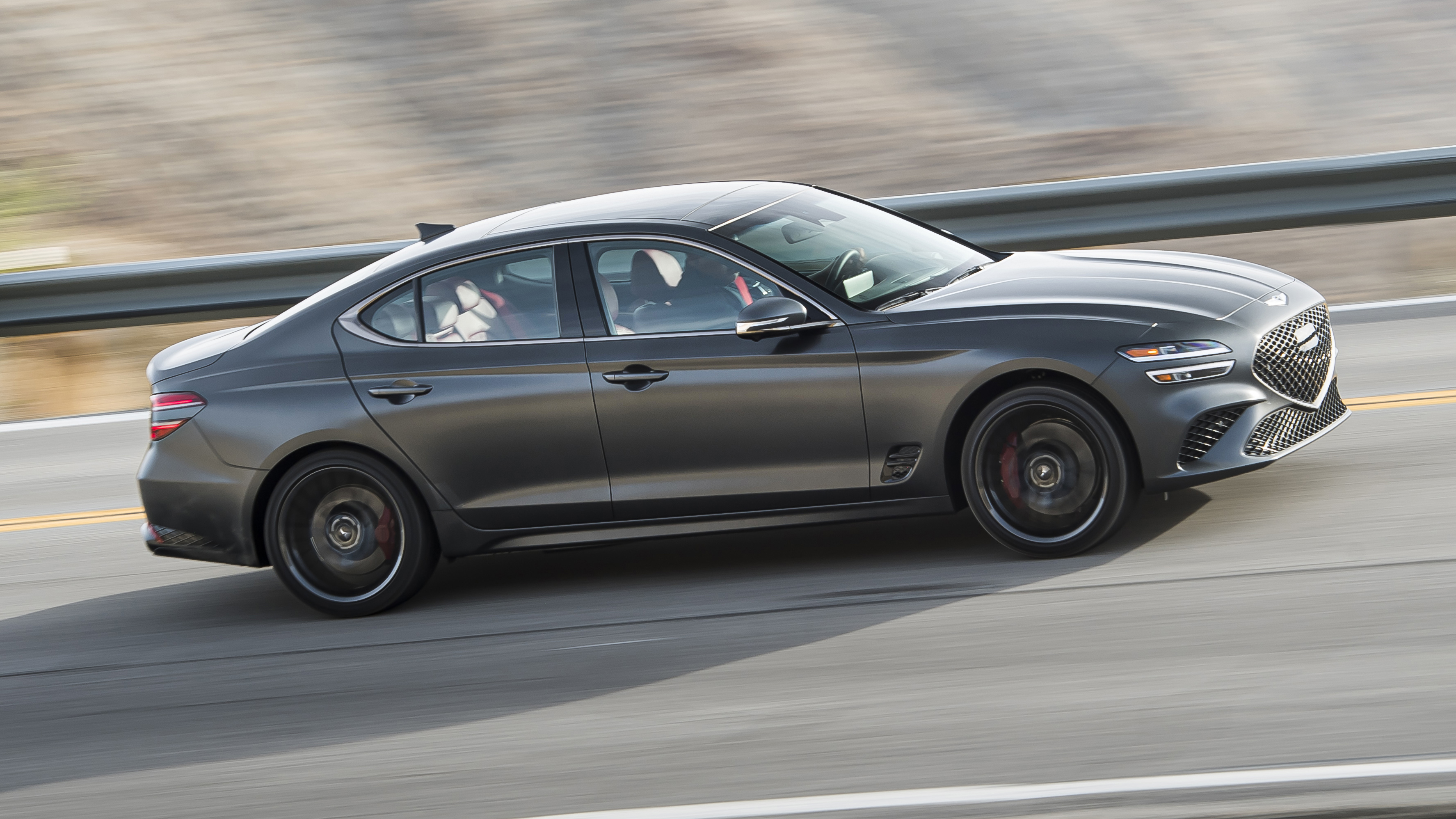
Interior
What is it like on the inside?
Things get off to a good start inside the G70 with a sound driving position with oodles of adjustment in both the fabulously comfortable seat and the electrically telescopic steering wheel. The wheel itself is much more slender than the overstuffed black puddings the German suspects are doing at the moment, and all the better for it.
What else is done well?
The overall layout is very simple to understand, if ever so slightly dated around the vents and lower reaches of the centre console. We like the tactile, chunky climate controls, the big buttons for the heated and ventilated seats, the simplicity of how all these controls are laid out, instead of having been buried in a touchscreen at the whim of a designer who refuses to acknowledge a car is a tool, not just a styling flight of fantasy. Well done, Genesis.
Time for the bad news?
What lets the cabin down is the material choice – or perhaps it’s just the colour. The window buttons, the temperature knobs, the centre console switchgear, even the paddleshifters… they’re all silver. On first glance this looks expensive as your eye is potentially fooled this is all cool alloy and metal, but one touch betrays it’s all plastic, and that gives the supposedly premium Genesis the feel of an own-brand MP3 player. Plastic that’s just plastic is less disappointing than plastic pretending to be metal.
Build quality is really tight, however, and the action of the buttons themselves, the gear selector and the door handles feels solid. New for this ‘facelifted’ G70 is the 3D-effect digital 8-inch instrument display with its array of dial fonts and colours and the latest 14.5-inch touchscreen from the Hyundai-Kia empire.
It’s swift to respond and supports Apple and Android smartphone mirroring, though only with a cable, rather than wirelessly. This seems incongruous when there’s a wireless charging pad on board, but regardless sockets for charging devices are plentiful enough, as are cubbies to store them.
Anything else?
There are advantages to being a little more dated than the current crop, too. There’s no reliance on a haphazard voice command assistant, and the Genesis has no touch-sensitive buttons on its steering wheel or centre console. Here’s hoping this common sense sticks around for the next-gen G70 and beyond.
Meanwhile, Hyundai’s brilliant blind-spot cam, which pops up with a view down the side of the car in the driver info screen when you turn in the indicator, appears here, and remains an excellent feature.
While the front seats are adequately spacious, rear room for adults is cramped, particularly footroom under the front seats and headroom for taller passengers.
An Audi A4 or even a Skoda Superb does it miles better, even if they don’t get heated rear seats as standard. But if you’re coming from, say, the poky Jaguar XE, you won’t notice. This lack of space betrays why there’s no hybrid battery offering – this platform, as shared with the Kia Stinger, simply doesn’t have the room on board.
Boot space is on the small side for the class at 330 litres. The rivals – you know the ones we mean by now – offer close to 500 litres.
Featured

Trending this week
- Car Review
BMW iX3






